Abstract
Sub-lethal exposure of Aspergillus fumigatus spore suspensions to formalin resulted in prolongation by 1-22 days of the period of less than one day normally needed by spores to produce visible growth in Sabouraud's liquid medium at 37° C.; the degree of delay depended on the concentration of formalin and the duration of exposure, and was due to an increase in the germination-time of spores. The formalin concentration could be adjusted so as to affect the germination-time of almost all spores in a suspension without reducing viability. The effect on germination was not abolished by thorough washing or treatment with sodium sulphite. The spores of four different strains of A. fumigatus and of cultures aged 3 to 14 days reacted similarly to formalin treatment. Although of greatly reduced virulence for mice, affected viable spores were still capable of producing infection and death following intravenous inoculation, provided they were not eliminated by the host before germination occurred.
Full text
PDF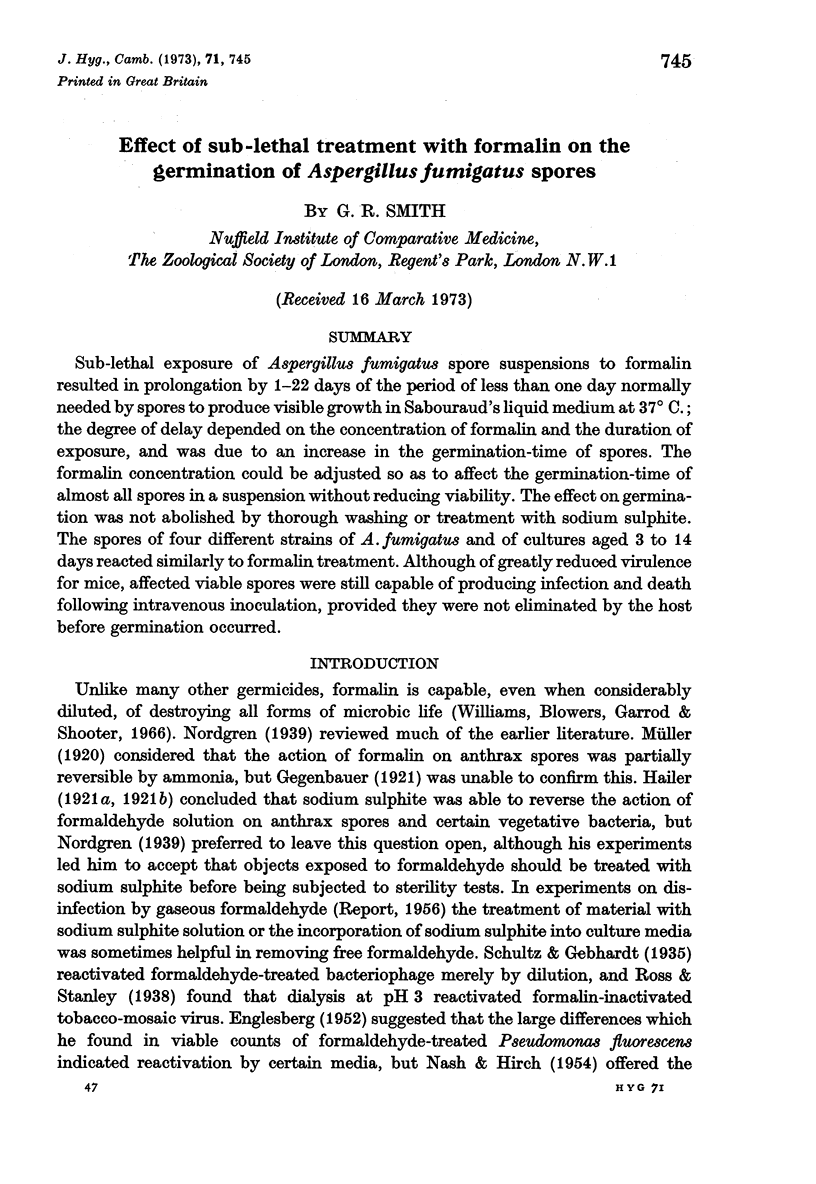
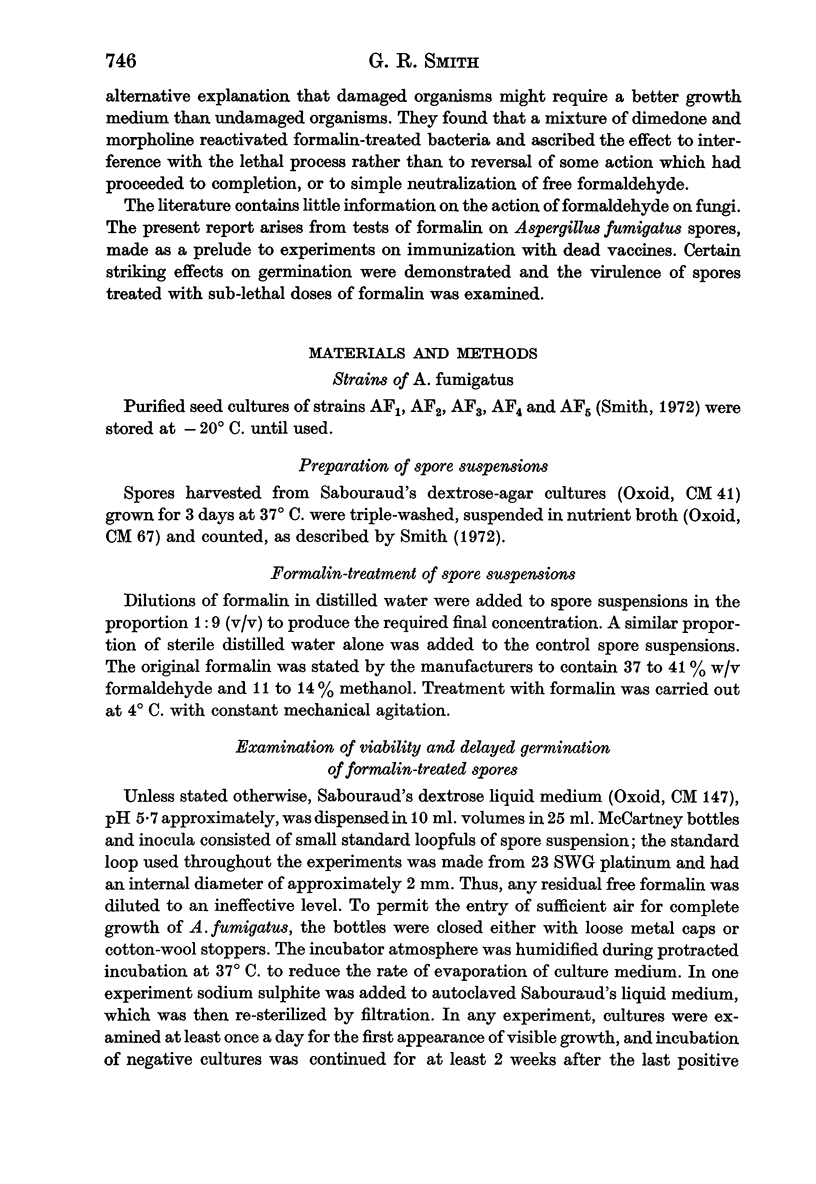
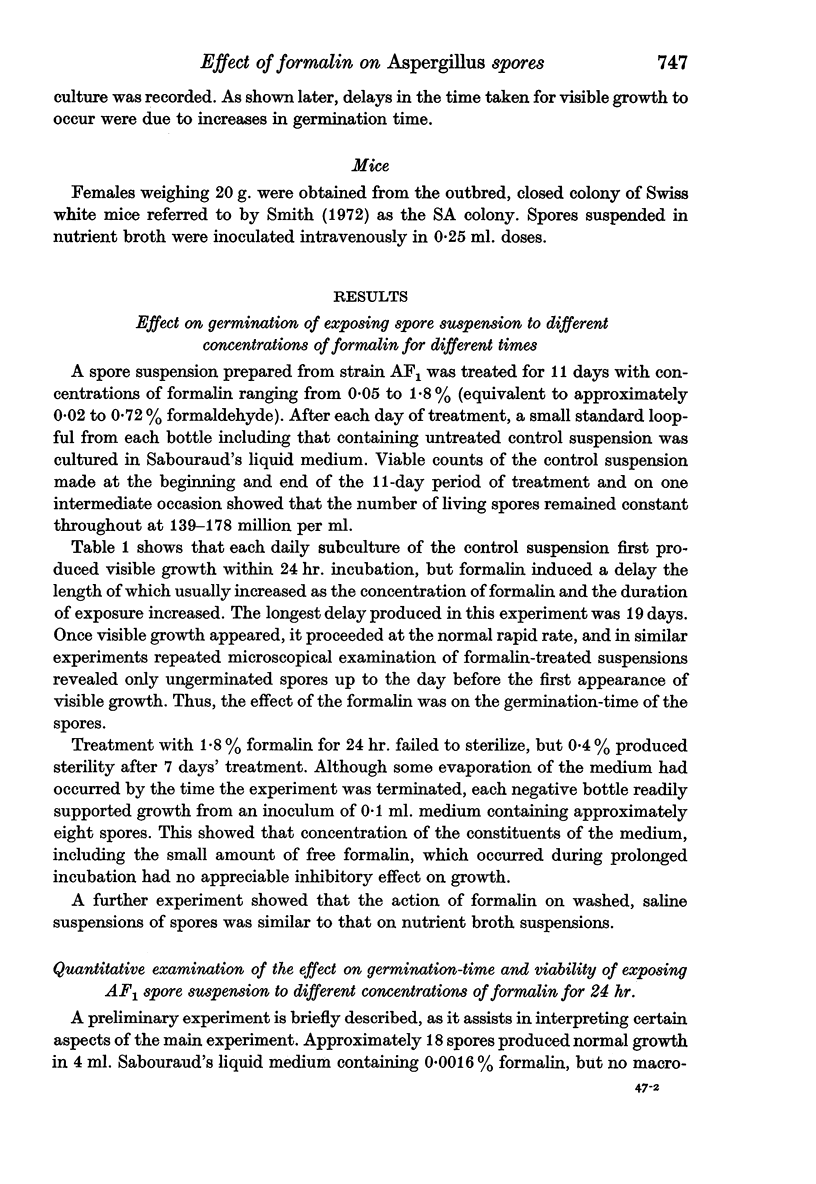
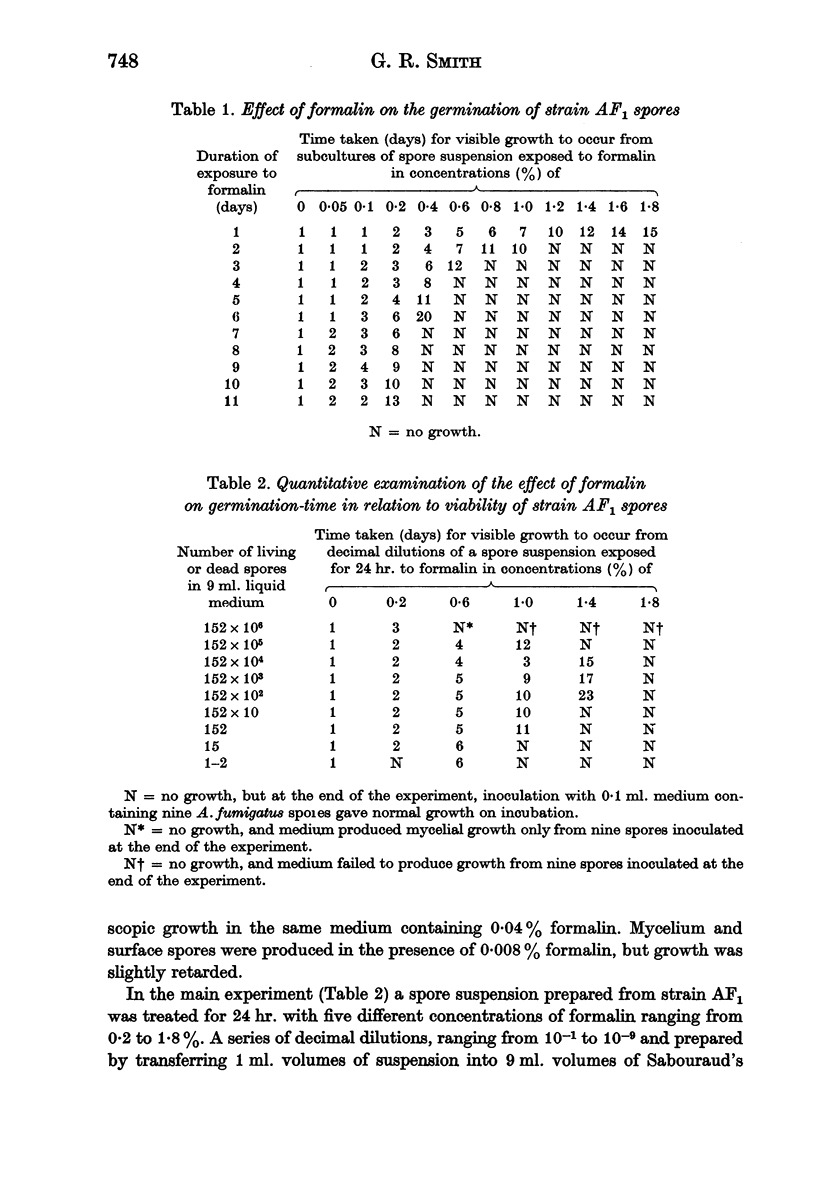
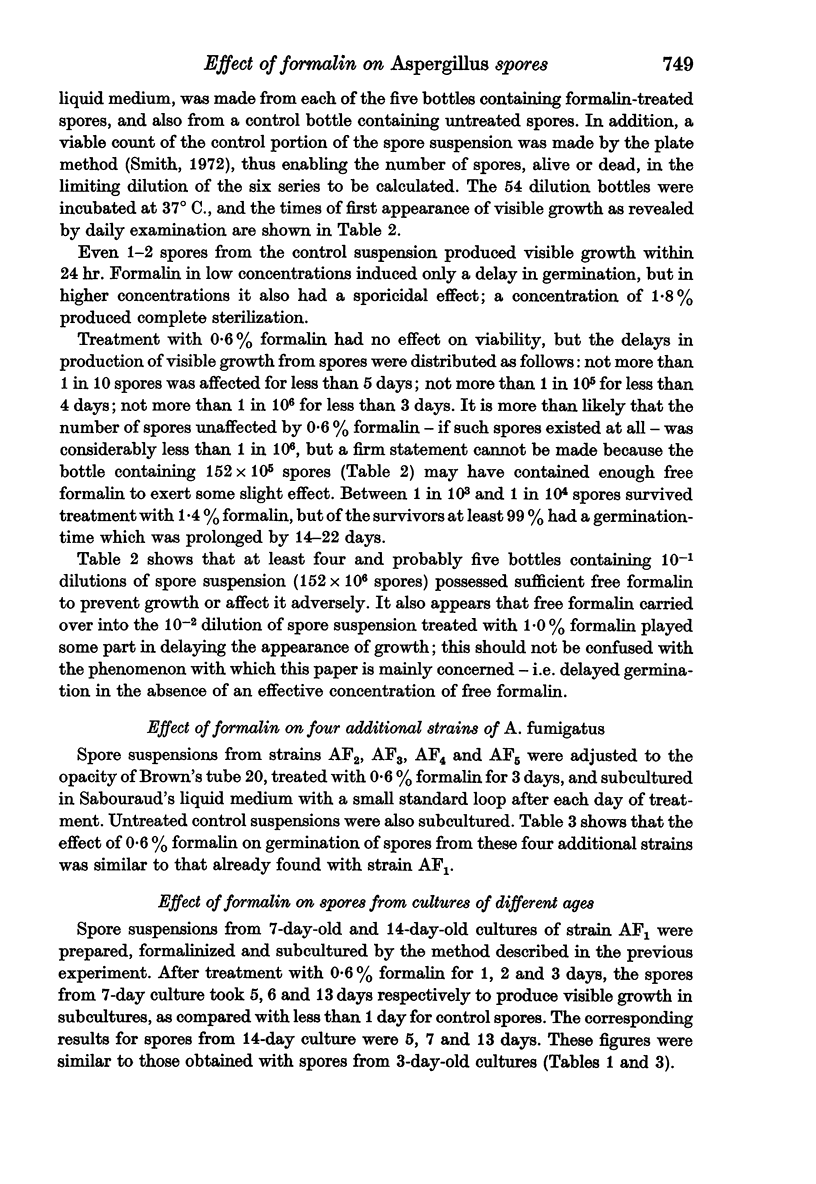
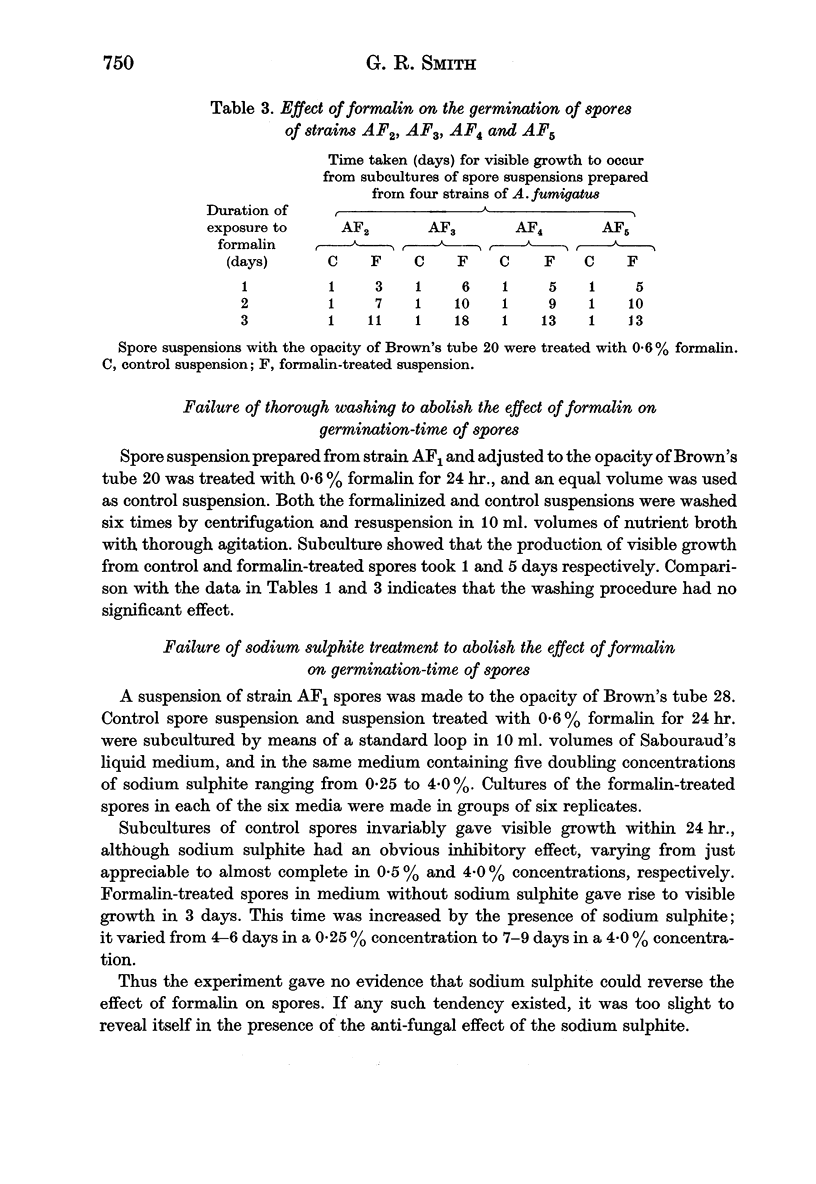

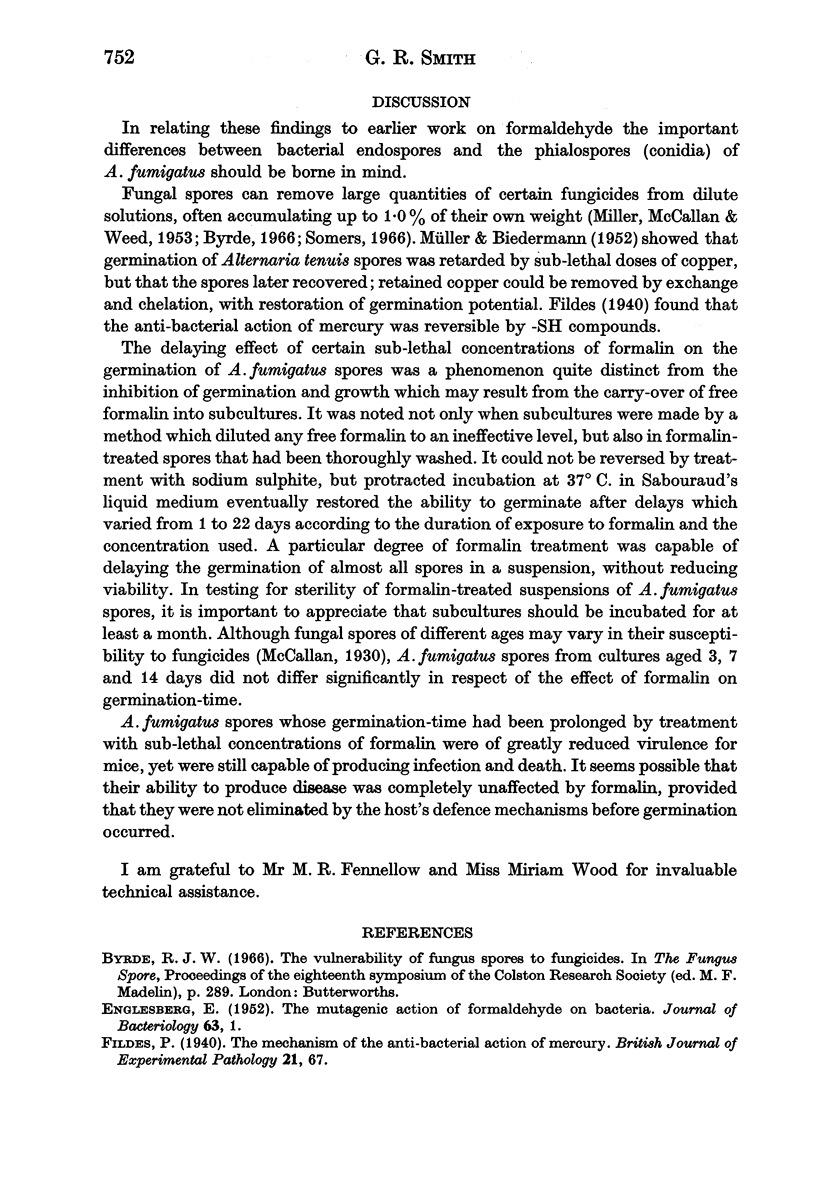
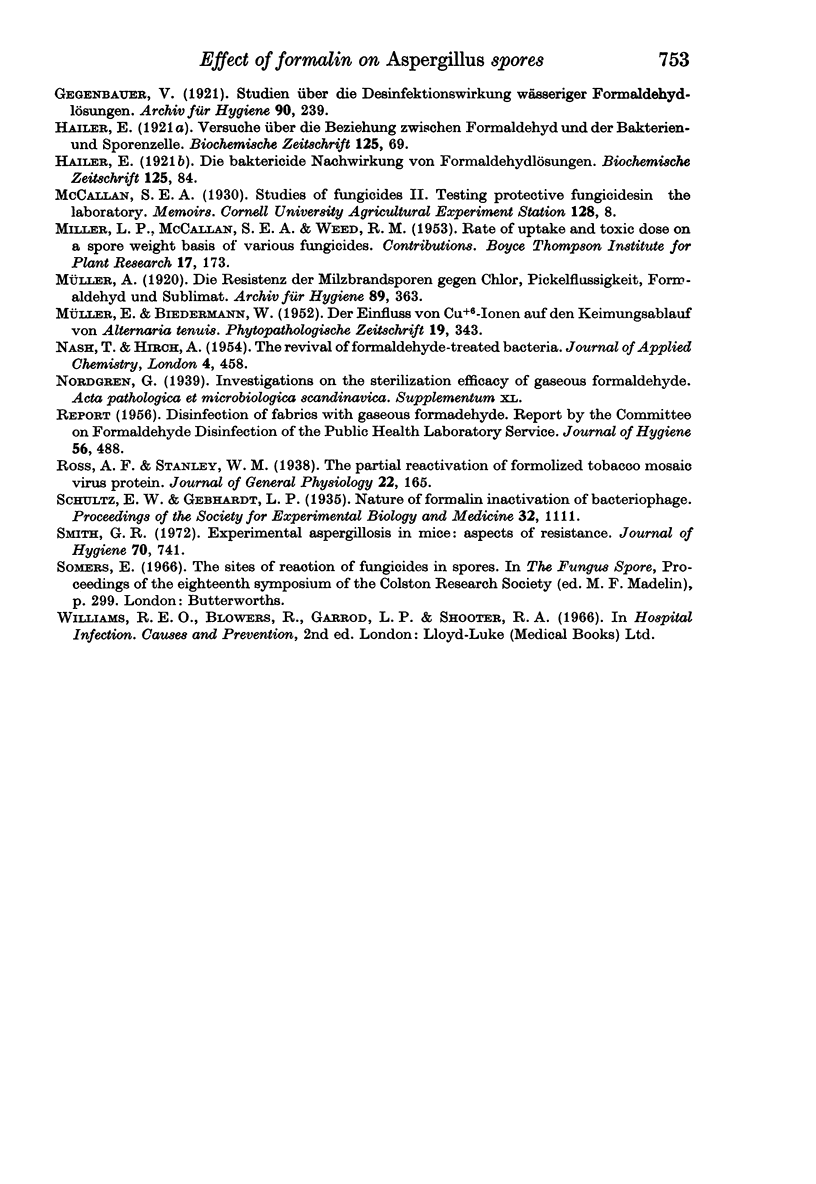
Selected References
These references are in PubMed. This may not be the complete list of references from this article.
- ENGLESBERG E. The mutagenic action of formaldehyde on bacteria. J Bacteriol. 1952 Jan;63(1):1–11. doi: 10.1128/jb.63.1.1-11.1952. [DOI] [PMC free article] [PubMed] [Google Scholar]
- Smith G. R. Experimental aspergillosis in mice: aspects of resistance. J Hyg (Lond) 1972 Dec;70(4):741–754. doi: 10.1017/s0022172400022580. [DOI] [PMC free article] [PubMed] [Google Scholar]


